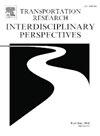The logistics of grain exports from wartime Ukraine: What are the highest priority areas to Address?
IF 3.8
Q2 TRANSPORTATION
Transportation Research Interdisciplinary Perspectives
Pub Date : 2025-02-21
DOI:10.1016/j.trip.2025.101363
引用次数: 0
Abstract
Ukraine is a key global producer and exporter of grain. In peacetime, over 70% of Ukraine’s grain production is exported, and over 90% of these exports go through Black Sea ports. The Russian invasion of Ukraine, and consequently the occupation, blockade, or destruction of these ports, has disrupted the maritime supply chains. In this paper we examine the difficulties experienced in attempts to substitute other modes and outlets for grain exports. We consider the existing literature, which identifies and discusses a large and varied set of problems facing this process of substitution but leaves a crucial question unanswered: Which are the highest priority issues which must be addressed before other reform policies can be effective? We report the results of our use of directed surveys and interviews with Ukrainian industry insiders to seek to identify which areas seem to be most important and appropriate for primary and accelerated policy measures. The results suggest two issues that should be the highest priorities for policymakers at this point: 1) the inadequacy of alternative export modes and locations, unprepared as they were for mammoth volume diversions from the Black Sea ports (including rail capacity and other issues on the EU sides of borders), and 2) the long-standing weaknesses of the rail monopolist Ukrzhaliznytsia, with years of funding neglect resulting in shortage and obsolescence of locomotives and rolling stock as well as a shortage of skilled labor.
战时乌克兰粮食出口的物流:需要解决的最优先领域是什么?
乌克兰是全球重要的粮食生产国和出口国。在和平时期,乌克兰70%以上的粮食用于出口,其中90%以上通过黑海港口出口。俄罗斯对乌克兰的入侵,以及随后对这些港口的占领、封锁或破坏,扰乱了海上供应链。在本文中,我们研究了尝试替代其他模式和渠道的粮食出口所经历的困难。我们考虑了现有的文献,这些文献确定并讨论了这一替代过程中面临的大量不同的问题,但没有回答一个关键问题:哪些是在其他改革政策生效之前必须解决的最优先问题?我们报告了我们对乌克兰业内人士进行直接调查和访谈的结果,以寻求确定哪些领域似乎最重要,最适合采取主要和加速的政策措施。结果表明,在这一点上,政策制定者应该优先考虑两个问题:1)替代出口模式和地点的不足,因为他们没有准备好从黑海港口大量转移(包括铁路运力和欧盟边境的其他问题),2)铁路垄断者乌克兰的长期弱点,多年的资金忽视导致机车和机车车辆短缺和过时,以及熟练劳动力短缺。
本文章由计算机程序翻译,如有差异,请以英文原文为准。
求助全文
约1分钟内获得全文
求助全文
来源期刊

Transportation Research Interdisciplinary Perspectives
Engineering-Automotive Engineering
CiteScore
12.90
自引率
0.00%
发文量
185
审稿时长
22 weeks
 求助内容:
求助内容: 应助结果提醒方式:
应助结果提醒方式:


